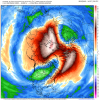-
Hello, please take a minute to check out our awesome content, contributed by the wonderful members of our community. We hope you'll add your own thoughts and opinions by making a free account!
You are using an out of date browser. It may not display this or other websites correctly.
You should upgrade or use an alternative browser.
You should upgrade or use an alternative browser.
Pattern January 2021 - Joyless January
- Thread starter TheBatman
- Start date
whatalife
Moderator

Sent from my iPhone using Tapatalk
NBAcentel
Member
L
Logan Is An Idiot 02
Guest
I still find a way to get shafted! Lolll
Sent from my Pixel 3 using Tapatalk
NBAcentel
Member
L
Logan Is An Idiot 02
Guest
Oh boy. I feel a cutter lurkingWay to early for this View attachment 60111
Sent from my Pixel 3 using Tapatalk
NBAcentel
Member
NBAcentel
Member
The CMC’s high pressure/surface bias at full force.CMC isn’t terrible either View attachment 60112View attachment 60113


NBAcentel
Member
Goodness lol
NBAcentel
Member
NBAcentel
Member
is that a Southern Slider set up?
NBAcentel
Member
is that a Southern Slider set up?
Yep, been a long long time since I’ve something like that look
NBAcentel
Member
This a about to be a Deep South run lol
LovingGulfLows
Member
- Joined
- Jan 5, 2017
- Messages
- 1,382
- Reaction score
- 3,643
Massive cyclone to the east which can't really go anywhere because of ridging to the NE. High from the north reinforcing cold air which can't really move east due to the big cyclone. Wave also gets forced to the south by the high. Could be a big run incoming for a lot of the South.
NBAcentel
Member
LovingGulfLows
Member
- Joined
- Jan 5, 2017
- Messages
- 1,382
- Reaction score
- 3,643
Gets suppressed, I like ! Not upset with this look at this range at all View attachment 60137View attachment 60138View attachment 60139
Yeah I'm fine with it. I love the massive ridging in eastern Canada. Let's stop these cold core lows from pulling away before our next wave arrives leaving us high and dry(or wet). Most exciting look yet on the Euro. Let's see if it has any support from the EPS though.
NBAcentel
Member
NBAcentel
Member
Clem282340
Member
Webberweather53
Meteorologist
Webberweather53
Meteorologist
EPS remains all-in on a SSWE in January.
Webberweather53
Meteorologist
iGRXY
Member
Don’t want to count my chickens before they hatch but something tells me we might be in the works for a snow storm from I20 up to I40 like the classic storms of the past.
Webberweather53
Meteorologist
L
Logan Is An Idiot 02
Guest
We the only place in the us that's above average

Sent from my Pixel 3 using Tapatalk
Webberweather53
Meteorologist
We the only place in the us that's above average
Sent from my Pixel 3 using Tapatalk
This is at 10mb not the surface.
L
Logan Is An Idiot 02
Guest
Oops didn't see that. Assumed it was stThis is at 10mb not the surface.
Sent from my Pixel 3 using Tapatalk
ATLwxfan
Member
GFS is apps cutter city. We may have to wait until later in the month for a real shot. But at least we aren’t torching.
Sent from my iPhone using Tapatalk
Sent from my iPhone using Tapatalk
BHS1975
Member
GFS is apps cutter city. We may have to wait until later in the month for a real shot. But at least we aren’t torching.
Sent from my iPhone using Tapatalk
Roll with the euro.
Sent from my iPhone using Tapatalk
We the only place in the us that's above average
Sent from my Pixel 3 using Tapatalk
Ask about how to read maps. Not every red means bad. Don’t take what you see for face value.
We the only place in the us that's above average
Sent from my Pixel 3 using Tapatalk
10hPa





























